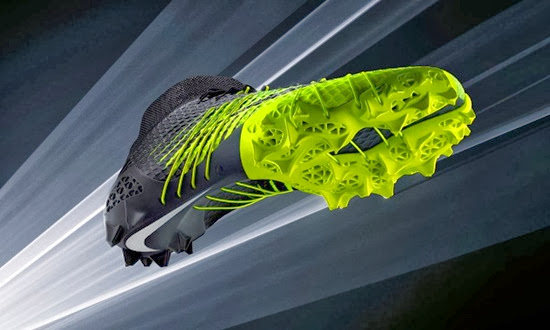
Don't look back
Nike Designer Tim Hatfield recently announced that self-tightening power laces, like the ones seen on Marty McFly’s Air Mag shoes in "Back To The Future Part II," could be arriving as soon as next year. The revelation sent sneaker aficionados into a frenzy, but it also hinted that a radical shift in shoe design is just around the corner.
D'Wayne Edwards, a former shoe design director for Nike’s Jordan Brand and founder of Pensole, a footwear design academy for youth, told DNews he expects big innovations in the coming years. While some shoe companies may capitalize on the "cool factor" of emerging technologies to create gimmicky products, he said "if technology is used in it’s pure form - to make the human body better or to make the person more in tune with their body, feet or footwear - then it will only be an enhancement."
While there's no shortage of fitness tracking applications for shoes, Edwards foresees even greater advancements coming down the design pipeline - from 3D-printed shoes and sneakers that tell runners if they over pronate, to soles that stimulate muscles and alert wearers if their back needs adjusting.
But tomorrow's shoe innovations are already starting to appear in today’s high-tech footwear. So read on, try on a pair and see if any are a good fit.
1. Thermo-Moulded Shoe
Vacuum compression technology creates a single-moulded shoe.
These may look like your ordinary pair of iconic Nikes, but they’re actually thermo-moulded shoes made from a form of vacuum compression technology that creates a single upper body, held together with no seams or stitching.
Featuring the Air Force 1, Dunk, and Air Max 90, the “Vac Tech” series offers to reduce resources, materials and chemicals used to make the shoe, perhaps an indication of the future of footwear manufacturing.
"I think the real technology will be on the chemical engineering side - being able to make material compounds and/or materials themselves that do more than just sit on top of your foot and look good," said Edwards.
Related: World's Oldest Shoe: Pictures
2. Fire-Starting Boots
Each sole has a small compartment specially designed to fit a fire-starting kit.
These Rocky S2V Substratum boots are a must-have for Jack London survivalists, or James Bond for that matter. Built into the inside of each sole is a small compartment specially designed to fit a fire-starting kit. One boot includes an Ultimate Survival Technologies Sparkie fire starter and the other contains two UST WetFire tinder cubes.
The one-ounce fire starter is designed to be used with one hand and comes with a retractable flint bar. The boots also come with a Survival Grenade, which includes a small knife blade, a needle, 10 feet of paracord and fishing provisions, such as hooks swivels and weights. The bundle doesn’t fit in the boot, but it could help cold, hungry and lost hikers enjoy a trout by a warm fire.
3. 3D-Printed Cleats
The 3D-printed tri-star stud on the sole of Nike's Vapor HyperAgility cleat creates the optimal traction
needed to decelerate and change direction quickly.
Nike has been using 3-D printers to prototype and test shoe designs ever since it produced the Vapor Laser Talon cleat just over a year ago. The proof-of-concept shoe eventually inspired the Vapor Carbon 2014 Elite cleat, which was worn by football players in this year’s Super Bowl.
Nike’s latest edition from this 3D-printing initiative is the Vapor HyperAgility, featuring a tri-star cleat design that designers believe will enhance football players’ speed and grip while playing on artificial turf. Perhaps most striking is Nike’s Flywire cabling that’s woven under the arch and through the shoe itself. Connected to the laces, these cables provide an ultra snug fit meant to prevent slippage.
Related: 8 NFL Facts That Will Piss You Off
4. Instagram-Inspired
This shoe is designed using the colours of your favourite Instagram photo.
For shoe design purists and sneaker connoisseurs, finding the right colour scheme is often the end-all be-all of footwear majesty. Long limited to simply mixing and matching shoes to clothing, now consumers have a chance to match their shoes to their favourite photo.
Nike’s PHOTOid project is simple. Users send in an Instagram photo and choose a shoe style. Designers then match the photo’s colour palate to the shoe design. Therefore, one could own a pair of shoes inspired by a sunset, a plate of Pad Thai or a wall of graffiti. The possibilities are endless.
Related: Apple Patents Smart Shoes
5. Energy-Harvesting Inserts
A shoe insert with microfluidic technology converts motion into energy.
University of Wisconsin-Madison engineering researchers developed an in-shoe system that harvests the energy produced from walking. The shoe insert converts mechanical energy to electricity via a microfluidic device where thousands tiny droplets of liquid interact with a nanostructured substrate. The device reportedly has a power density of up to one kilowatt per 10.76 square feet, with a capacity of 20 watts that could be generated and stored in a rechargeable battery.
Attached to the “Instep Nanopower” insert is an adapter that wearers can plug their phones or other mobile devices into, though researchers say the power could also be transmitted wirelessly.
Related: Chic Eco-Fashion Show: Photos
6. Social Media Sneakers
Embedded electronics allow the shoe to receive Twitter updates.
For the 2012 Summer Olympics in London, Nash Money design teamed up with Adidas to create the Social Media Barricade shoe. The guts of a phone and a basic two-line LCD screen were implanted into the shoe, allowing the sneaker to receive Twitter updates. The idea was that fans could Tweet athletes while they competed in events.
While the shoe was more of a proof-of-concept, its designers believe such connected and customized footwear could be more of a reality by the 2016 Summer Games in Rio de Janeiro.
"Shoes are going to become a lot more digital, similar to the old school equalizers," Edwards said. "It’s not going to be such a mass market, it’s going to be more specific to the wearer."
7. Bad-Ass Breakdancers
Pressure sensors in the toe and heel produce sound effects when the wearer dances.
Worn by hip-hop pioneers Run-DMC, Adidas footwear has a legendary connection with rap history and breakdancing. So it makes sense that the company would create a shoe that allows breakdancers to make beats and music as they move their feet.
Part of Adidas’ promotional MEGA series, the “Megalizer” shoes featured pressure sensors in the toe and heel, along with a wireless transmitter that relays signals to a computer program. The system even allows wearers to control the volume and sound effects while dancing.
Edwards said pressure-sensitive technologies like these off a lot of opportunities for shoe designers."There are temperature changing opportunities, muscle and nerve stimulation opportunities," he said. "From a consumer point of view, it would look cool if your shoe lights up because of the stimulation your foot’s providing when you walk."
Check out French hip-hop dancers Les Twins test the Megalizers in the above video.
8. Super Lightweight
A one-piece design reduces weight.
Engineered for the attacking striker, Nike’s Hypervenom soccer cleat features a split-toe plate and redesigned cleat patterns to maximize agility and responsiveness. The cleat shapes also are designed for sudden changes in direction, with a forefront groove that helps players generate toe-off speed for faster sprints. The upper portion of the shoe is a one-piece NikeSkin that provides a barefoot-like touch on the ball.
"The NikeSkin Technology upper fits closer to your foot for more natural touch," Nike explains. "The one-piece design eliminates unnecessary layers - using only thin PU film and performance mesh - to reduce weight and bring your foot closers to the ball."
9. Auto-Lace
It's almost 2015, and auto-lacing shoes are right on time.
When “Back To The Future Part II” was released in 1989, moviegoers were given a glimpse of what technological marvels to expect in 2015. While flying cars and hoverboards have yet to go mainstream, the Nike Air Mags are hitting their stride.
In 2011, Nike released a limited edition series of 1,500 pairs that were auctioned off on eBay with all net proceeds going to the Michael J. Fox Foundation for Parkinson’s disease research. Although the shoes did stay true to the original’s spacey design, including LED light-up features on the outer side sole and ankle strap, they were missing the signature innovation - laces that automatically tightened.
But now that Nike designer Tim Hatfield confirmed that power laces will become a reality in 2015, have all our shoe wishes been granted? What footwear innovations would your like to see in the coming years?

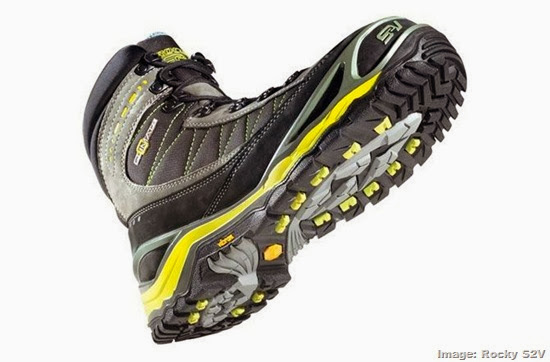
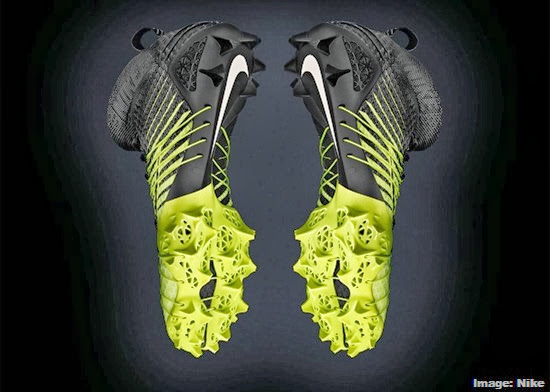

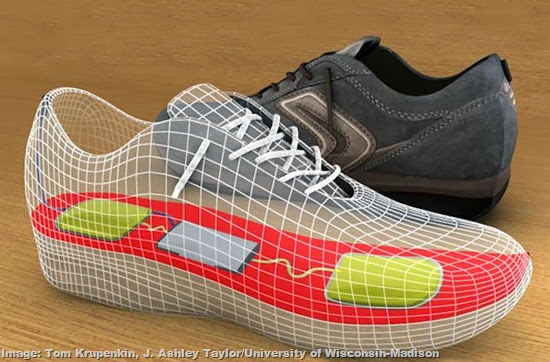
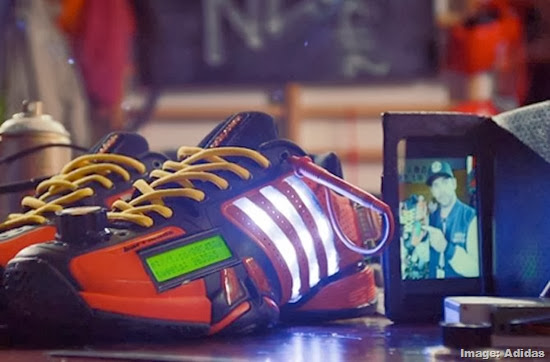


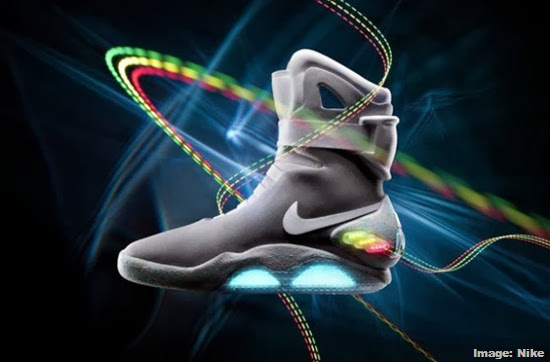
No comments:
Post a Comment
Please adhere to proper blog etiquette when posting your comments. This blog owner will exercise his absolution discretion in allowing or rejecting any comments that are deemed seditious, defamatory, libelous, racist, vulgar, insulting, and other remarks that exhibit similar characteristics. If you insist on using anonymous comments, please write your name or other IDs at the end of your message.